 April 1, 2022 John E. Ross, KD8IDJ, Editor
| ||||||
Register to Log in to ARRL.ORG Follow these steps to sign in and access ARRL features and services: Go to arrl.org and click "Login" which will redirect you to "Register" (please note, even if you have an ARRL account you will need to register). To register, enter the main e-mail address we have on file and click "Next." This will log you in to arrl.org, which now allows you to renew, donate, and shop all in one transaction. If you need help, we're here for you. Call us Monday - Thursday from 8 am - 7 pm (ET) and on Friday from 8 am - 5 pm (ET) or e-mail us at membership@arrl.org. In This Edition . . .
New FCC Application Fee Will Not Apply to Amateur Radio License Upgrades The Federal Communications Commission (FCC) staff has clarified in response to an ARRL request that the new $35 application fee will not apply to most license modifications, including those to upgrade an "We are pleased that the FCC will not charge licensees the FCC application fee for license upgrade applications," said ARRL Volunteer Examiner Coordinator (VEC) Manager Maria Somma, AB1FM. "While applicants for a new license will need to pay the $35 FCC application fee, there will be no FCC charge for future upgrades and administrative updates, such as a change of mailing or email address. Most current licensees, therefore, will not be charged the new FCC application fee until they renew their license or apply for a new vanity call sign." ARRL previously reported that the new $35 application fee for amateur radio licenses will become effective on April 19, 2022. Further information and instructions about the FCC Application Fee are available from the ARRL VEC at www.arrl.org/fcc-application-fee. WSPR Beacon on the Air from Antarctica AMSAT Argentina has assembled and delivered a permanent WSPR (Weak-Signal Propagation Reporter) beacon system to the Argentine research station at Esperanza Base on the Antarctic Peninsula.
The LU1ZV WSPR beacon is on the air from Esperanza Base, a permanent Antarctic research station.
WSPR is a digital communications protocol designed for reception at very weak-signal levels. It is part of the WSJT-X software suite. You can use WSJT-X to receive the LU1ZV beacon directly, or you can see reports from other stations online at www.wsprnet.org. [Thanks to the AMSAT News Service] UK Amateurs Exploring 40 MHz John Desmond, EI7GL, reports that Ofcom -- the communications regulator in the United Kingdom -- has granted temporary Innovation and Research licenses to several UK amateurs to transmit in the 40 MHz band. On his blog, John stated that Roger Lapthorn, G3XBM, in the east of England will be operating beginning on April 2 with a license that is valid for 1 year. In a statement, Roger said, "After a very long wait, Ofcom has approved my 8-meter permit. It permits me to use 40 to ND4MR Receives Instructor of the Year Award The 2021 ARRL Herb S. Brier Award for Instructor of The Year was given to recipient Dave Ritter, ND4MR, during the ARRL forum at the Charlotte, North Carolina Hamfest on Saturday, March 12. Continuously licensed since age 14, Dave is retired and living in Wilkesboro, North Carolina. ARRL sponsors this award in conjunction with the Lake County Indiana Amateur Radio Club in Brier's memory to recognize superior Amateur Radio instruction and recruitment. An ARRL Member for nearly 40 years, Ritter is an ARRL Registered Instructor and a full-time faculty member at Wilkes Community College, where he's been the lead -- and sole -- Technician licensing course instructor since 2010.
ARRL Roanoke Division Director Dr. Jim Boehner, N2ZZ (left), presents the 2021 Herb S. Brier Instructor of the Year award to Dave Ritter, ND4MR. [Bill Morine, N2COP, photo] ARRL Podcasts Schedule The latest episode of the On the Air podcast (Episode 26) features an audio tour of the 10-meter band.
The On the Air and Eclectic Tech podcasts are sponsored by Icom. Both podcasts are available on Apple Podcasts (iOS) and Stitcher (Android). The K7RA Solar Update Tad Cook, K7RA, Seattle, reports: Many solar flares and CMEs occurred over the reporting week (March 24 - 30) but with glancing blows and near misses it wasn't reflected in the geomagnetic indicators. The Planetary A index reached a high for the week of 19 on March 27. Average daily planetary A index rose by a modest amount from 6.3 to 10. Average daily sunspot number rose from 33.4 to 80.1, while solar flux went from 99.9 to 132.7. Predicted solar flux is forecast to be 150 on March 31 and April 1, then 145, 130, 125, 120, and 115 on April 2 - 6, 118 on April 7 - 9, then 115 and 110 on April 10 - 11, 105 on April 12 - 14, 108 on April 15, 105 on April 16 - 19, 110 on April 20 - 21, 115 on April 22, 125 on April 23 - 26, then 123, 118 and 118 on April 27 - 29, and 108 on April 30 through May 2. On Wednesday, March 30, local news in Seattle was telling viewers that if only we had clear skies, we could see aurora tonight or tomorrow. This is likely with the predicted Planetary A index at 58 and 32 on March 31 and April 1, then 10, 12 and 10 on April 2 - 4, 8 on April 5 - 6, then 5 and quieter conditions on April 7 - 19, 10 on April 20 - 21, then 5, 15, and 10 on April 22 - 24, 5 on April 25 - 29, and 12, and 8 on April 30 and May 1. We've been seeing more activity on 10 meters over the past week. Check it out. Sunspot numbers for March 24 - 30, 2022, were 44, 50, 48, 97, 125, 124, and 73, with a mean of 80.1. 10.7-centimeter flux was 112, 112, 119, 130, 156, 149, and 151, with a mean of 132.7. Estimated Planetary A indices were 9, 10, 7, 18, 10, 8, and 8, with a mean of 10. Middle latitude A index was 6, 3, 6, 11, 4, 7, and 6, with a mean of 8.1 A comprehensive K7RA Solar Update is posted Fridays on the ARRL website. For more information concerning radio propagation, visit the ARRL Technical Information Service, read "What the Numbers Mean...," and check out the Propagation Page of Carl Luetzelschwab, K9LA. A propagation bulletin archive is available. For customizable propagation charts, visit the VOACAP Online for Ham Radio website. Share your reports and observations.
The sun has been active this week. Sunspot AR2975, in particular, has been generating M-class solar flares. [Photo courtesy of SDO/HMI]
In Brief... After careful deliberation, the SP DX Contest Committee, together with Polish Amateur Radio Union (PZK) and the SP DX Club, has decided to cancel the 2022 SP DX Contest. Since the start of the war in Ukraine, Poland has taken in more than 2 million refugees. Polish radio amateurs offer Ukrainian refugees accommodation in their homes and their help and services in any way they can. Under these exceptional circumstances, the organizers have decided that this year's SP DX Contest will be canceled. [Thanks to Southgate ARC] Amateur radio researchers from NASA's Ham Radio Science Citizen Investigation (HamSCI) have observed giant waves in the upper atmosphere known as Large-Scale Traveling Ionospheric Disturbances, or LSTIDs, for the first time in amateur radio spot data. The observational results appear to demonstrate the effects of LSTIDs on radio communications, as well as add to the understanding about how the waves are observed in different types of scientific instruments. The results were published in the American Geophysical Union journal Geophysical Research Letters.
Search the ARRL Hamfest and Convention Database to find events in your area. Just Ahead in Radiosport
Search the ARRL Contest Calendar for more.
Have News for ARRL? Submissions for the ARRL Letter and ARRL News can be sent to news@arrl.org.
Subscribe to...
| ||||||
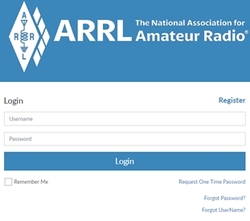 You will be prompted to create a user name and new password. Your password must contain at least eight characters, a number, an uppercase letter, a lowercase letter, and a non-alphanumeric character.
You will be prompted to create a user name and new password. Your password must contain at least eight characters, a number, an uppercase letter, a lowercase letter, and a non-alphanumeric character.  amateur radio licensee's operator class and changes to club station trustees. The FCC staff explained that the new fees will apply only to applications for a new license, renewal, rule waiver, or a new vanity call sign. As previously announced, the new fees take effect on April 19, 2022.
amateur radio licensee's operator class and changes to club station trustees. The FCC staff explained that the new fees will apply only to applications for a new license, renewal, rule waiver, or a new vanity call sign. As previously announced, the new fees take effect on April 19, 2022.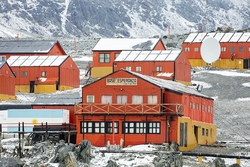 Using the call sign LU1ZV, the 200 mW beacon is presently active on 40, 20, 15, and 10 meters at 7.0386, 14.0956, 21.0946, and 28.1246 MHz, respectively, and reception has been reported by stations throughout the world.
Using the call sign LU1ZV, the 200 mW beacon is presently active on 40, 20, 15, and 10 meters at 7.0386, 14.0956, 21.0946, and 28.1246 MHz, respectively, and reception has been reported by stations throughout the world.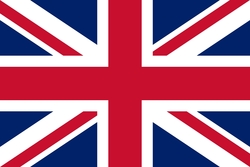 42 MHz with digital modes (including CW) at 5 W ERP maximum. I expect to erect a wire dipole that will be directed towards Europe. I expect to be mostly on FT8 around 40.676 MHz with a precise frequency done in liaison with others. My hope is all 8-meter FT8 stations can be monitored with one USB dial setting but spaced out. Five watts should certainly cover Europe when sporadic E is in play. I will try some local CW crossband QSOs but hope to be on FT8 24/7." [Thanks to Southgate ARC News]
42 MHz with digital modes (including CW) at 5 W ERP maximum. I expect to erect a wire dipole that will be directed towards Europe. I expect to be mostly on FT8 around 40.676 MHz with a precise frequency done in liaison with others. My hope is all 8-meter FT8 stations can be monitored with one USB dial setting but spaced out. Five watts should certainly cover Europe when sporadic E is in play. I will try some local CW crossband QSOs but hope to be on FT8 24/7." [Thanks to Southgate ARC News]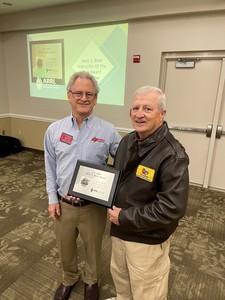
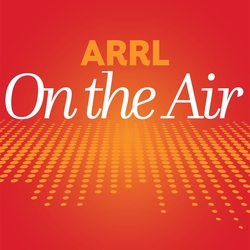
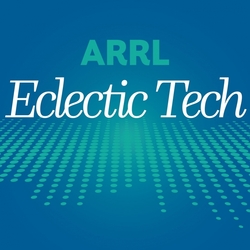 The latest edition (Episode 56) of the
The latest edition (Episode 56) of the 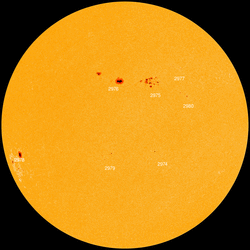
-Blue.jpg)








